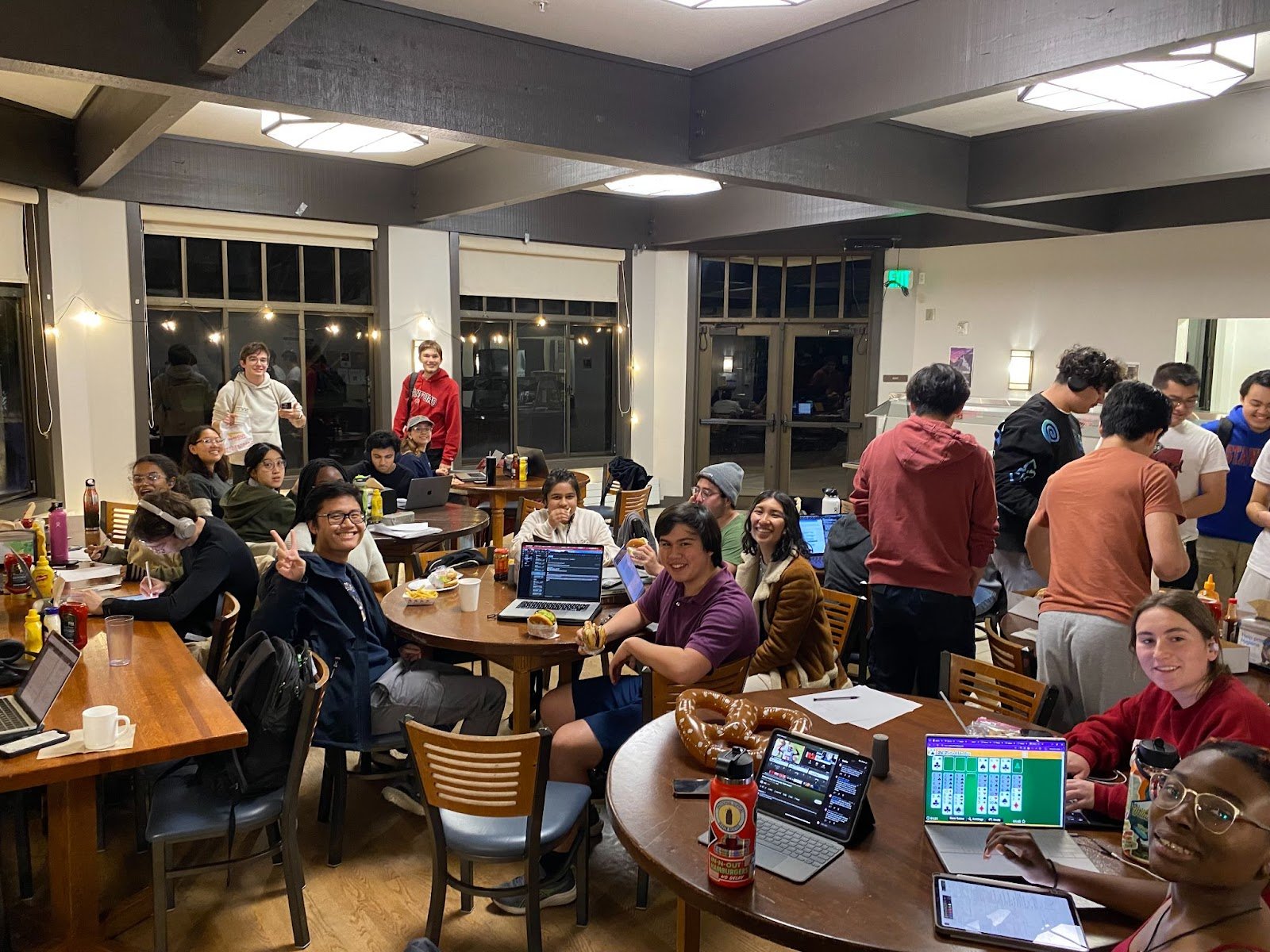A party’s on at Synergy, but the partygoers aren’t any ordinary attendees. In fact, most of them are physics majors.
This “phrave,” or physics rave, was organized by the Stanford University Physics Society (SUPS). In addition to raves, SUPS aims to foster community among physics majors and non-majors alike through weekly study nights, physics mentorship and local middle school outreach.
During fall quarter, SUPS experimented with hosting review sessions for Physics 41, an introductory physics class at Stanford, including a “STEMentor Ultimate Review Funtime” session to help students prepare for the course’s midterm.
“Physics can be intimidating, and sometimes the way it’s taught is not conducive to asking questions,” said SUPS co-president León Garcia ’27. “The majority of kids in Physics 41 are not going to major in physics, but we would like more students to have a positive experience with that class.”
Garcia has also helped SUPS develop a “light-hearted” Fizz presence to reach out to more students. Some of their posts poke fun at Stanford traditions like Marriage Pact, showing a mock email pairing SUPS with Stanford University Mathematical Organization (SUMO) as their perfect match.
“The physics major is perceived as being these very serious brainiacs and nerds who don’t know how to crack a joke or have a good time,” Garcia said. “Part of the Fizz presence is trying to have students know that physics is a welcoming community and that we don’t have to be so serious all the time.”

Garcia emphasized that SUPS is open to anyone, not just physics majors. The co-presidents hope SUPS attracts undergrads without a strong physics background in high school, or even those who are only mildly interested in physics.
“It’s important when some [physics] classes are perceived as being rough, that students have a good community to bond together,” he said. “It’s important to not go through physics alone, and I think building community even among students who aren’t in the major is very important.”
SUPS also currently has a mentoring program that partners 41 undergraduates with graduate students in physics. The program allows students to talk with their graduate student mentor about opportunities in physics research.
“There’s a barrier to getting started in theoretical physics research; it’s hard to get a professor to take you on if you don’t have any background, but there’s also no class to gain that background,” said co-president Francesca Fernandes ’25. “So undergrads end up floundering a little since there’s no way to bridge the gap between having no background while having an interest in research.”
SUPS hopes to develop the mentorship program into a directed reading program modeled after those in the Stanford math and philosophy departments, building an “on-ramp” for undergrads to engage in future physics research.
Reading papers, taking the right information from them and drawing conclusions requires a specific skill set, Garcia said. “It’s useful to have graduate students who read a ton of papers on their day-to-day basis to help us out with paper-reading.”
John Vaccaro ’27 appreciates the opportunity to connect with graduate mentors over research.
“I haven’t had experience [in physics research] yet, and I’m sort of looking to get experience and to get started this year, so [SUPS has] been helpful in that respect,” he said.

SUPS also engages in community outreach, where they teach lessons at underserved high schools and middle schools in the Bay Area.
“There are several high schools in the Bay Area that don’t offer a physics class to their high schoolers; we think that’s an opportunity for us to have a large impact,” Garcia said.
SUPS organizes many physics-related events, including most recently a faculty lunch with assistant physics professor Susan Clark. Events can also be more light-hearted, whether that is barbecues or hikes.
One of Fernandes’ favorite memories from SUPS was a Dish hike with other members. “We had really nice, deep conversations about their backgrounds in physics. It was a nice, intimate thing,” she said.
Garcia hopes to organize more trips off campus to museums or laboratories, including a potential field trip to the Lawrence Livermore National Laboratory.
